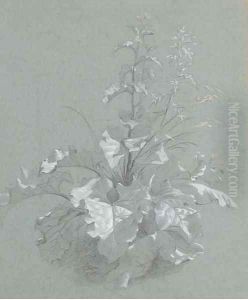Jan The Younger Weenix Paintings
Jan Weenix, also known as Jan Weeninx or Jan The Younger Weenix, was a Dutch painter born in Amsterdam in 1642. He was a part of a family of artists; his father, Jan Baptist Weenix, was also a well-known painter. Jan The Younger is recognized for his exceptional work in painting still lifes, game pieces, and landscapes, distinguishing himself from his contemporaries with a unique style and subject matter.
Jan Weenix was trained by his father, who was a versatile artist with an oeuvre that included Italianate landscapes and genre scenes. After the death of his father in 1660, Jan the Younger continued to develop his style, which was greatly influenced by the works of his father. He later became a member of the painters' guild in Utrecht and worked there for a few years before returning to Amsterdam.
Weenix's paintings are known for their sophisticated compositions and fine attention to detail, often depicting dead game, such as hare and fowl, which were popular subjects in Dutch Golden Age painting. These game pieces were typically set in a landscape or a garden with classical elements, reflecting the opulent lifestyle of his wealthy patrons, who included members of the Dutch aristocracy and royalty across Europe.
His works are characterized by a masterful use of light and texture, which made the furs, feathers, and foliage he painted look remarkably realistic and tactile. Another aspect of Weenix's paintings is the sense of decay and the passage of time, which is often symbolized by the presence of dead animals in his still lifes, a reminder of the transient nature of life and luxury.
Jan Weenix's legacy continued through the 18th century as his works remained in demand, and he influenced many still-life painters of the time. His paintings are now part of the collections of numerous major museums around the world. Jan Weenix died in Amsterdam in 1719, leaving behind an impressive body of work that continues to be studied and admired for its artistic quality and historical significance.
